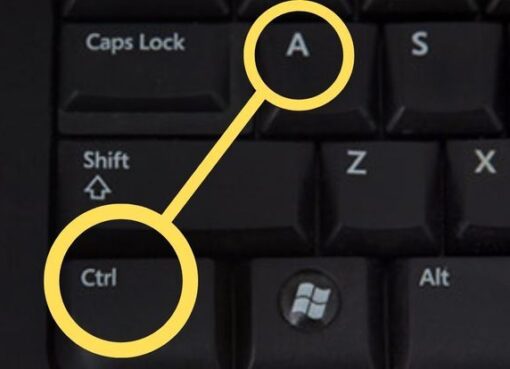Google Chrome is a popular web browser known for its user-friendly features and seamless synchronization capabilities. Whether you need to back up your bookmarks, transfer them to a new computer, or even export your cookies and settings, this comprehensive guide will walk you through each step in detail. In this guide, we’ll cover the following scenarios:
- Exporting Chrome bookmarks.
- Copying bookmarks from one Google account to another.
- Exporting cookies from Chrome.
- Transferring bookmarks from one Chrome profile to another.
- Exporting Chrome settings to a new computer.
- Exporting Chrome bookmarks and passwords.
- Exporting Chrome browsing history.
By the end of this guide, you’ll have a thorough understanding of how to manage your Chrome data efficiently.
Also learn: How to Clear Your Browsing History in Any Browser
Understanding the Chrome Bookmark System
Before we dive into the technicalities of exporting Chrome bookmarks and settings, let’s start with the basics.
What are Bookmarks in Chrome?
Bookmarks are essentially your saved shortcuts to your favorite websites. Instead of typing a URL every time, you can save it as a bookmark and access it with a single click. Chrome organizes bookmarks into folders and allows you to sync them across devices.
Why Export Bookmarks?
- Backup: Exporting bookmarks is a way to safeguard your valuable web links against unexpected data loss.
- Migration: You can transfer your bookmarks to a new device or a different browser.
- Sharing: Exporting bookmarks is an excellent way to share your collection with friends or colleagues.
Preparing to Export Bookmarks
Before you start exporting bookmarks, ensure your Chrome browser is up to date.
Step 1: Update Google Chrome
- Open Chrome on your computer.
- Click on the three vertical dots in the top-right corner to open the menu.
- Hover over “Help.”
- Click “About Google Chrome.”
Chrome will check for updates and automatically install any available updates.
Step 2: Create a Bookmark Backup
Before you embark on the export process, it’s a good idea to create a backup of your bookmarks. This is an additional layer of protection in case anything goes wrong during the export process.
To back up your bookmarks, follow these steps:
- Open Chrome.
- Click on the three vertical dots to open the menu.
- Hover over “Bookmarks.”
- Select “Bookmark Manager.”
- Click on the three vertical dots in the upper-right corner of the Bookmark Manager.
- Choose “Export bookmarks.”
This will save your bookmarks as an HTML file. You can save it to a location of your choice.
Step 3: Access the Chrome Bookmarks Manager
To proceed with exporting bookmarks, you need to access the Chrome bookmarks manager. Here’s how:
- Open Chrome on your computer.
- Click on the three vertical dots in the top-right corner to open the menu.
- Hover over “Bookmarks.”
- Select “Bookmark Manager.”
You are now ready to export your bookmarks.
Export Chrome Bookmarks
Now that we’re well-prepared, let’s get into the actual process of exporting Chrome bookmarks.
Desktop Version:
Step 1: Open Chrome and Access the Menu
- Open Google Chrome on your computer.
- In the top-right corner, you’ll see three vertical dots. Click on them to access the Chrome menu.
Step 2: Navigate to the Chrome Bookmark Manager
- Hover your cursor over “Bookmarks” in the menu.
- A submenu will appear. Click on “Bookmark Manager.”
Step 3: Export Your Chrome Bookmarks
- In the bookmark manager, you’ll see another menu represented by three vertical dots. Click on it.
- Among the options that appear, select “Export bookmarks.”
Step 4: Choose the Export Format
Chrome will prompt you to choose the format for exporting bookmarks. You can select either HTML or JSON.
- HTML: This is a user-friendly format, widely supported by browsers. It’s recommended for most users.
- JSON: This is a more technical format and is suitable for advanced users who might want to manipulate the data programmatically.
Step 5: Save the Exported File
- After selecting the format, click “Save.”
- Choose the location where you want to save the file and give it a descriptive name.
It’s essential to select a location that you’ll remember, as this file will contain your valuable bookmarks.
Mobile Version:
Step 1: Open the Chrome app on your mobile device
Step 2: Tap “Bookmarks” from the menu.
Step 3: In the bookmarks section, tap “Bookmark Manager.”
Step 4: Follow the Desktop Version Steps
Choosing the Export Format
Choosing the right export format is crucial. Let’s take a closer look at the available formats and which ones to choose.
HTML Format:
- HTML is the most commonly used format for exporting bookmarks. It’s widely supported by various web browsers, making it easy to import your bookmarks to other browsers if needed.
- This format is user-friendly and suitable for most users.
JSON Format:
- JSON (JavaScript Object Notation) is a more technical format.
- It’s suitable for advanced users who might want to manipulate the data programmatically.
- If you have specific technical requirements or are planning to use the exported data for custom integrations, JSON might be your choice.
In most cases, HTML is the recommended format due to its compatibility and ease of use.
Saving and Storing Exported Bookmarks
Now that you’ve successfully exported your bookmarks, it’s crucial to save and store the exported file properly. Let’s explore the best practices for this step.
Step 1: Choose a Secure Location
When saving your exported bookmarks, select a secure location on your computer or external storage device. This is essential to prevent accidental loss of your valuable bookmarks.
Step 2: Organize Your Bookmarks
To keep your bookmarks well-organized and easily accessible, consider creating a dedicated folder structure. You can do this by importing your bookmarks into a separate folder or using a dedicated bookmark manager extension.
Step 3: Protect Your Exported File
Treat the exported bookmarks file with care. Since it contains your bookmarks, consider encrypting or password-protecting it if it contains sensitive information.
Importing Bookmarks from an HTML File:
1. Open Chrome.
2. Access the Chrome menu by clicking on the three vertical dots in the top-right corner.
3. Hover over “Bookmarks” and select “Bookmark Manager.”
4. In the bookmark manager, click on the three vertical dots in the upper-right corner.
5. Choose “Import bookmarks.”
6. Select the HTML file you want to import and click “Open.”
7. Chrome will import the bookmarks, and you’ll find them in a folder named after the HTML file.
Importing Bookmarks from a JSON File (Advanced Users):
For advanced users who prefer JSON format:
1. Open Chrome.
2. Access the Chrome menu by clicking on the three vertical dots in the top-right corner.
3. Hover over “Bookmarks” and select “Bookmark Manager.”
4. In the bookmark manager, click on the three vertical dots in the upper-right corner.
5. Choose “Import bookmarks.”
6. Select the JSON file you want to import and click “Open.”
7. Your bookmarks will be imported. However, please note that JSON imports may require additional technical configurations.
Troubleshooting Common Issues
Like any technical process, exporting bookmarks can sometimes come with challenges. Here are some common problems users encounter during the export process and their solutions:
Issue 1: Export Fails
Solution: Ensure you have the latest version of Chrome. If the problem persists, try restarting Chrome and your computer.
Issue 2: Can’t Find the Exported File
Solution: Double-check the location where you saved the file. If you can’t locate it, you might need to re-export your bookmarks.
Issue 3: Corrupted Bookmarks
Solution: If you suspect your bookmarks are corrupted, try importing them into a different browser to see if they’re intact. If not, refer to your backup (if you created one) or consider exporting your bookmarks in JSON format and troubleshooting the issue.
Tips and Best Practices
Let’s explore some tips and best practices for effectively managing your Chrome bookmarks:
1. Organize Your Bookmarks:
Regularly categorize and organize your bookmarks into folders. This makes them easier to navigate and search through.
2. Use Bookmark Extensions:
Consider using bookmark management extensions, such as Toby or Raindrop, to enhance your bookmarking experience.
3. Sync Your Bookmarks:
Take advantage of Chrome’s sync feature to keep your bookmarks consistent across multiple devices.
4. Regularly Backup Your Bookmarks:
As a precaution, make it a habit to create backups of your bookmarks. This ensures you can always recover them in case of accidental deletion.
5. Export Periodically:
Even if you don’t have an immediate need to export your bookmarks, it’s a good practice to do it periodically. This helps maintain an up-to-date backup.
Conclusion
In conclusion, this comprehensive guide has walked you through the process of exporting Chrome bookmarks. Whether you need to back up your bookmarks, transfer them to a new device, or export cookies and settings, you now have the knowledge and tools to do so.
Frequently Asked Questions:
- Why should I export Chrome bookmarks?
Exporting Chrome bookmarks is essential to back up your valuable web links, transfer them to a new device or browser, or even share them with others. This guide will help you understand the importance and provide step-by-step instructions. - How do I export Chrome bookmarks to another browser?
The process varies depending on the target browser. Export your Chrome bookmarks in HTML format, then import them into the new browser. The guide covers this in detail and offers tips for a smooth transition. - Can I export cookies from Chrome for a specific website?
Exporting cookies from Chrome is a bit more complex, but it’s possible with the right tools. This guide discusses the process of exporting cookies and highlights its benefits. - What’s the best way to keep my bookmarks organized after exporting?
Organizing your exported bookmarks is crucial. The guide recommends creating a well-structured folder system for easy access. It also suggests using bookmark management extensions for a seamless experience. - How often should I export my Chrome bookmarks and settings?
It’s a good practice to export your bookmarks periodically, especially if you frequently add or modify bookmarks. This ensures you always have an up-to-date backup. The guide provides insights on when and how to do this effectively.
- How Does Automated Scheduling Save Time and Boost Engagement? - April 16, 2025
- 21 Delicious High Protein Foods - May 31, 2024
- Black Seed Oil: Health and Beauty Benefits - May 30, 2024



